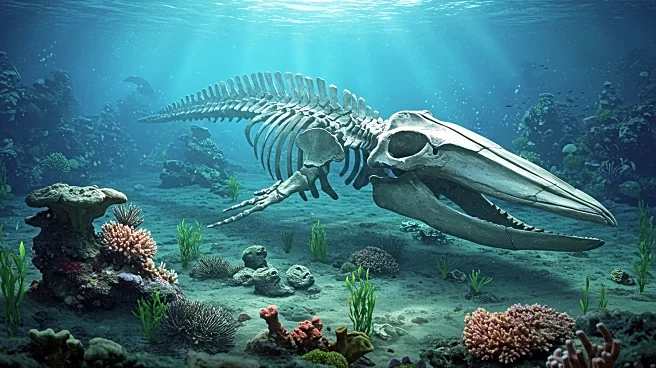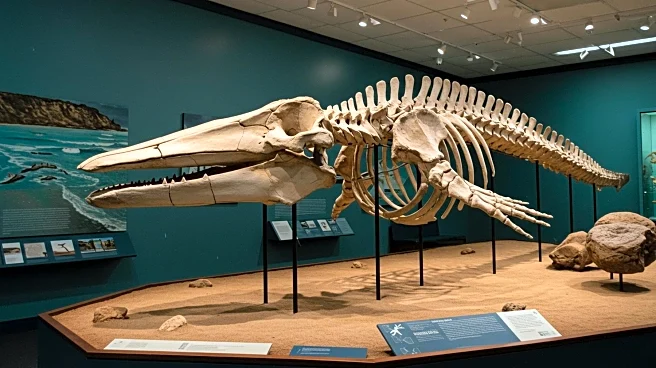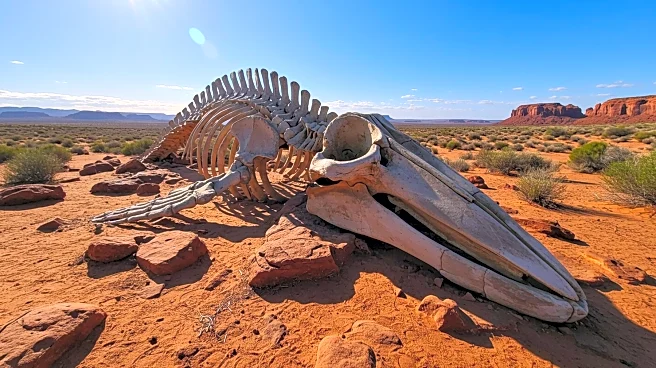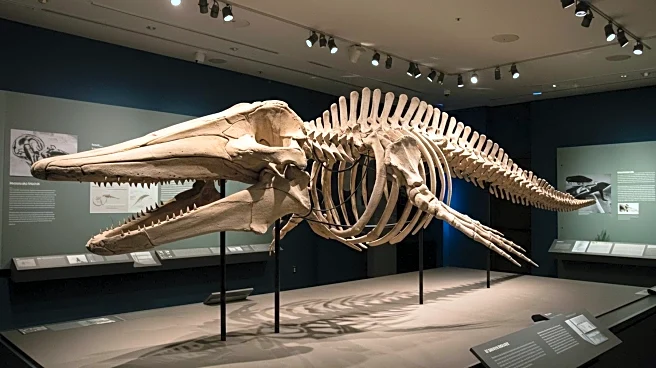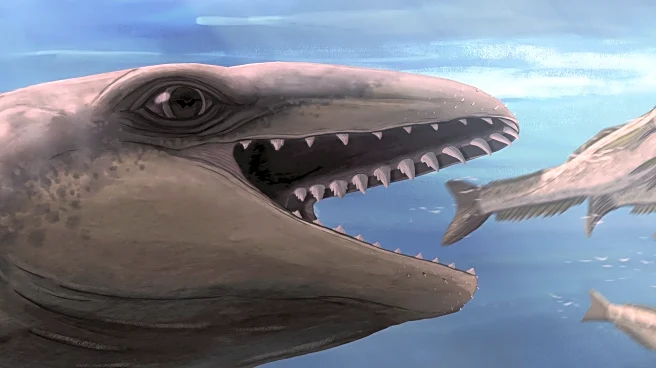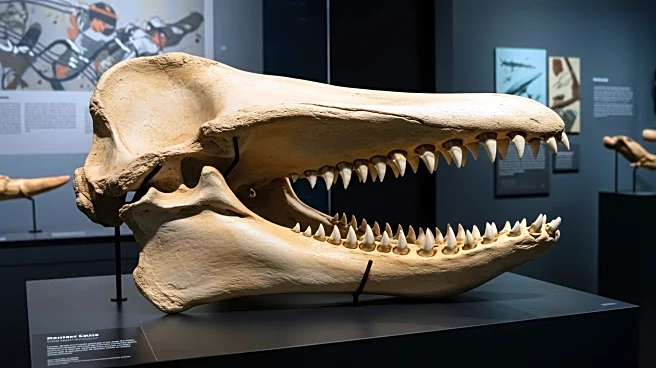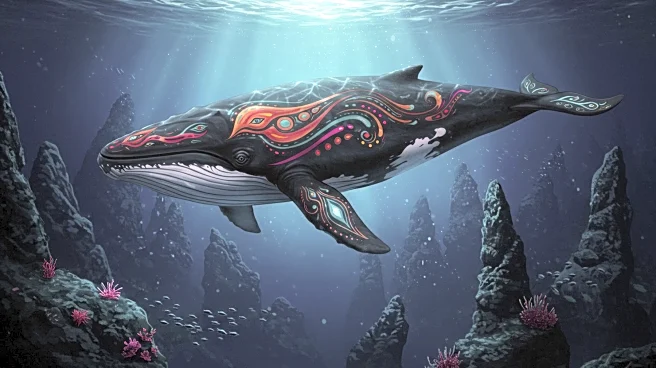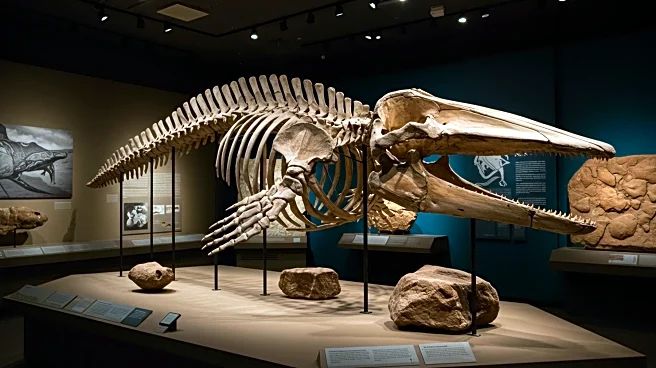Rapid Read • 8 min read
Australian paleontologists have identified a new prehistoric whale species, Janjucetus dullardi, discovered on a beach in Australia. The species, which lived around 25 million years ago, is described as having a unique appearance resembling a mix between a whale, a seal, and a Pokémon. The creature measured less than ten feet in length and featured large bulbous eyes, razor-sharp teeth, and a pointed snout. It may have also had small leg-like stumps. The discovery was made by Ross Dullard, an amateur fossil hunter and school principal, who found a partial skull with ear bones and teeth in 2019. The species is named after Dullard, who expressed excitement over the discovery and plans to celebrate with a fossil party.
AD
The discovery of Janjucetus dullardi provides valuable insights into the evolutionary history of whales, highlighting the diverse adaptations these marine mammals have undergone over millions of years. Understanding the physical characteristics and ecological roles of such prehistoric species can help scientists trace the lineage and evolutionary changes leading to modern whales. This research contributes to the broader field of paleontology by expanding knowledge of marine life in the prehistoric era, offering clues about the environmental conditions and biodiversity of ancient oceans. The findings may also inspire further exploration and study of fossil records, potentially leading to more discoveries that can enrich our understanding of Earth's history.
The identification of Janjucetus dullardi may prompt additional research into the species' habitat and lifestyle, as well as its role in the marine ecosystem of its time. Paleontologists might conduct further excavations in the area where the fossil was found to uncover more specimens or related species. The discovery could also lead to collaborations between museums and research institutions to study the evolutionary pathways of marine mammals. Public interest in paleontology might increase, encouraging educational initiatives and fossil hunting activities, which could result in more amateur discoveries contributing to scientific knowledge.
The discovery of Janjucetus dullardi underscores the importance of amateur fossil hunters in contributing to scientific research. It highlights the potential for individuals outside the scientific community to make significant contributions to paleontology, fostering a collaborative environment between professionals and enthusiasts. This case also raises awareness about the preservation of fossil sites and the need for responsible exploration to protect valuable scientific resources. Additionally, the unique appearance of the species may capture public imagination, potentially influencing cultural representations of prehistoric life in media and art.
AD
More Stories You Might Enjoy
